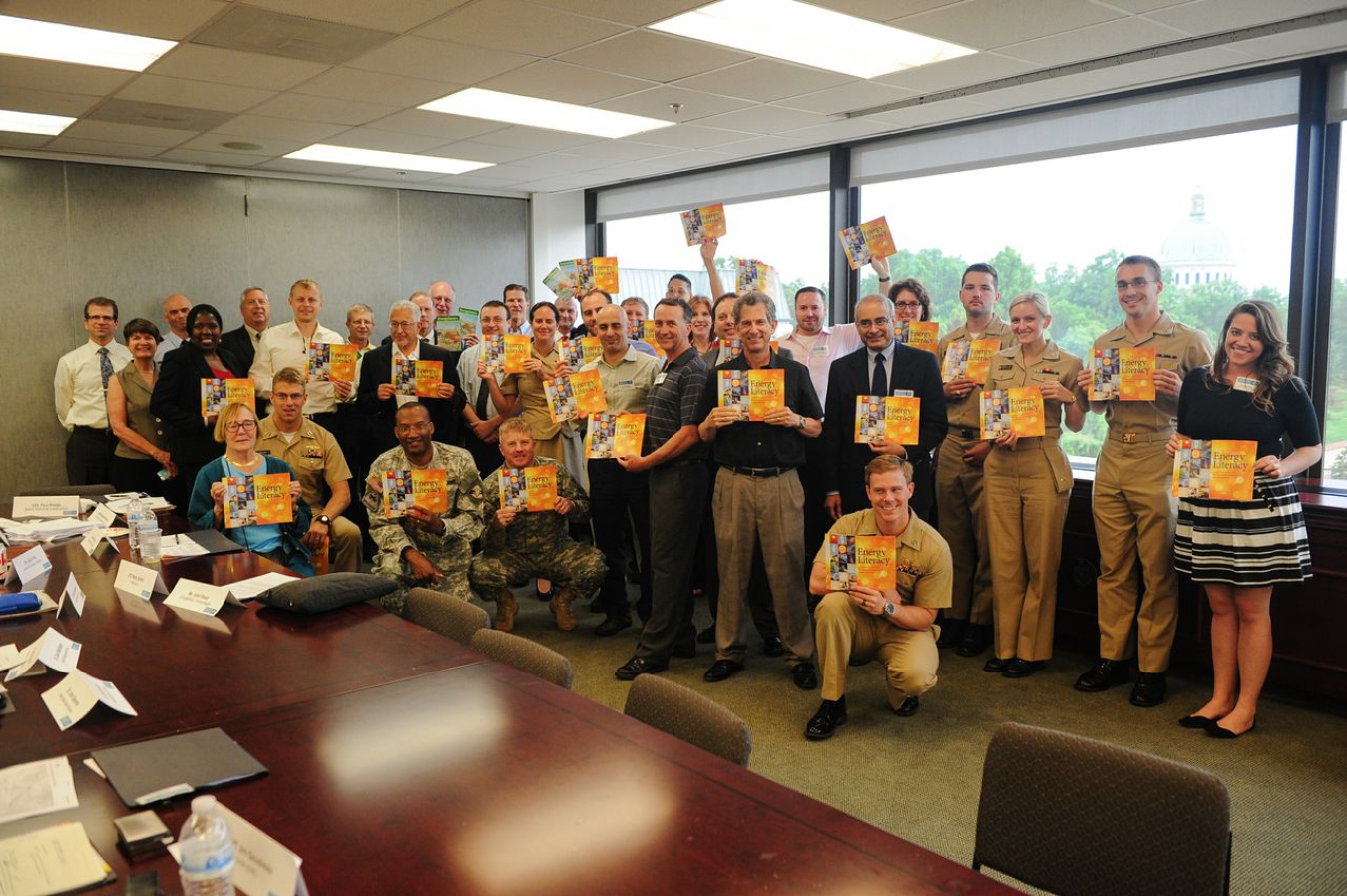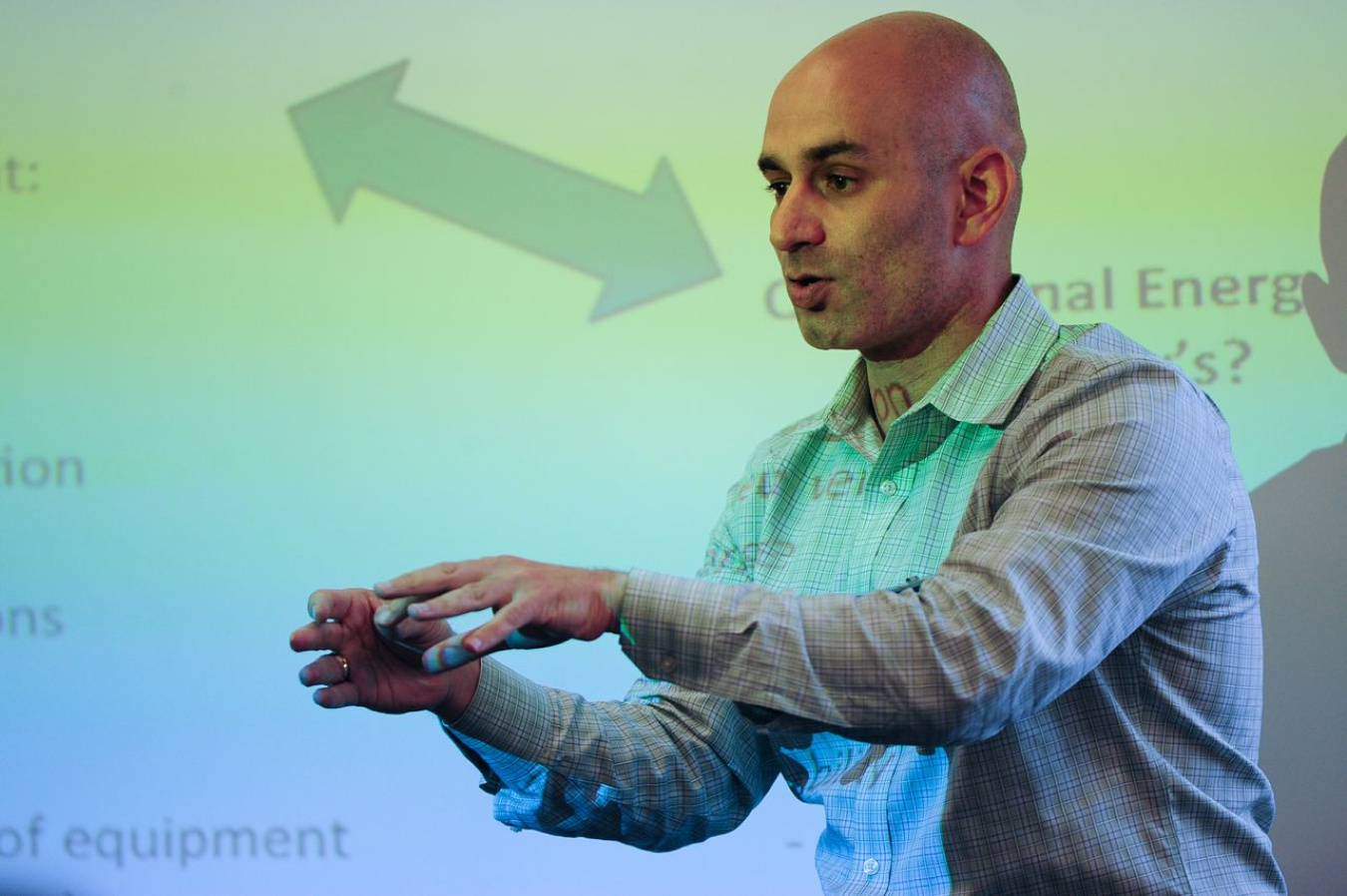The Naval Postgraduate School hosted an Energy Education and Training meeting at the U.S. Naval Academy in 2014.
July 2, 2014
Participants of an energy education meeting at the U.S. Naval Academy hold up the Energy Literacy Framework.

Michael Baskin speaks during an energy education meeting at the U.S. Naval Academy in June.
“Getting more mission out of every gallon” drove the Naval Postgraduate School (NPS) to host an Energy Education and Training meeting at the U.S. Naval Academy on June 11-12, 2014. The meeting was centered around energy education for service members located in outposts during deployed operations, where energy is critical to mission accomplishment.
The Energy Education and Workforce Development team within the Department of Energy’s (DOE’s) Office of Energy Efficiency and Renewable Energy (EERE) joined the Institutional Change team from EERE’s Federal Energy Management Program to brief meeting participants on the range of EERE resources available to support energy change within the U.S. Department of Defense (DoD). The U.S. Navy is one DoD armed service working towards instituting energy culture change, beginning with the way it educates and trains its service members.
At the meeting, the EERE team shared information on existing EERE programs and resources with representatives from the Navy, Marine Corps, Army, and Air Force. These educational tools include:
To address many of the critical issues in energy education, DOE and DoD collaborated with 11 other federal agencies to pioneer the Energy Literacy framework for educators. The multidisciplinary framework can be used by instructors to ensure that all energy concepts from the natural sciences to social sciences are covered.
By participating in working sessions on DoD energy challenges at outposts, the EERE team was able to gain a better understanding of deployed energy challenges and to identify relevant education materials that the services could adopt for their own training programs and courses.
For the DoD, while technology is critical to energy usage in deployed operations, user behavior and energy awareness also significantly impact the amount of energy used. Because inefficient energy consumption requires more fuel resupply operations that place service members at risk on the battlefield, reducing energy waste is not only a matter of economics but also a potentially life-saving measure.
Improving the energy efficiency of any organization, let alone one as large as DoD, requires a synchronized effort involving new technology as well as energy education, training, and behavior change. Moving forward, EERE will continue to collaborate with DoD on both energy education and training, as well as ongoing collaboration in technical areas. By harnessing complementary strengths, the two organizations continue to learn and benefit from each other’s capabilities.
Visit EERE’s Energy Education and Workforce Development website to learn more about using the Energy Literacy framework to enhance your curriculum or program. You can also find Energy 101 videos, short introductions to technologies, and over 100 lesson plans and activities for teaching about energy.

